Introduction
Hello and welcome to my first-ever article talking about the new Disney card game, Lorcana! I am really excited to write this as I have many decks I have brewed up here with 0 testing and no metagame to truly build decks upon.
But this game, on my initial play, is excellent, and I am genuinely excited to share them all with you.
Quick update for those that don’t know: I am TeasdaleMTG. I make Magic: the Gathering Pauper content on YouTube and write articles here every week. Now, I am diving into the Disney world of Lorcana!
What is Lorcana
Lorcana is a TCG created by Ravensburger that immerses you in the World of Disney, using Ink to assemble the beloved teams of Disney characters that we all know and love! From Elsa to Pumba and every character in between!
Set Up a Game
Setting up a game is easy.
You decide who is going first, usually by some form of dice roll.
Shuffle your deck and draw seven cards. After you choose the cards you don't want, you put them on the bottom of the deck and draw that many. Then, shuffle your deck again.
Once that is done by both you and your opponents, you are ready to go!
Deckbuilding
Deckbuilding a constructed deck in Lorcana is simple. The deck must contain at least 60 cards, and you can’t have more than 4 copies of the same card name. To clarify this: you can have 4 copies of Stitch - Abomination and 4 copies of Stitch - Rock Star, for instance, as they have different card names.
Other deckbuilding rules include the Ink types. You must have no more than two Ink types when deckbuilding. You can have a Mono Sapphire deck, or a Sapphire & Amber deck, but it cannot be a Sapphire, Amber and Steel deck, for example, as this breaks the deck building rules.
The colors are depicted on the color of the card next to the name and there is even a symbol below the card name to represent that Ink type.
Overall, these are the simple deckbuilding restrictions when building a Lorcana deck.
How to Play
This game lends mechanics from a lot of other card games, but has its own unique gameplay too.
The aim of the game is to get your Lore from 0 up to 20. This is done by having your characters quest for their respective values.
What a Turn Looks Like
Ready, Set, Draw and Main Phase are the names and order of turns.
Ready refers to the start of your turn, when everything Readies and untaps. This includes your Items, Ink and Characters.
Set refers to when you check any effects that happen either from "readying" or the start of the turn.
Draw is the phase when you draw for your turn.
The main phase is when you will take most of your actions; add cards to your Inkwell, play Actions, Items and Characters. Send your characters to Challenge other characters or send them on a Quest. Once you have done all you would like to do, you end the turn and pass to your opponent or next player, if you're playing a multiplayer game.
Questing & Lore
As previously mentioned, the goal is to get your Lore up to 20 before your opponents. To do this, each character has a Lore value down the right-hand side of the text box. As you can see here, Lilo has a Lore Value of 2, depicted by the 2 symbols on the right-hand side.
Ink and the Inkwell
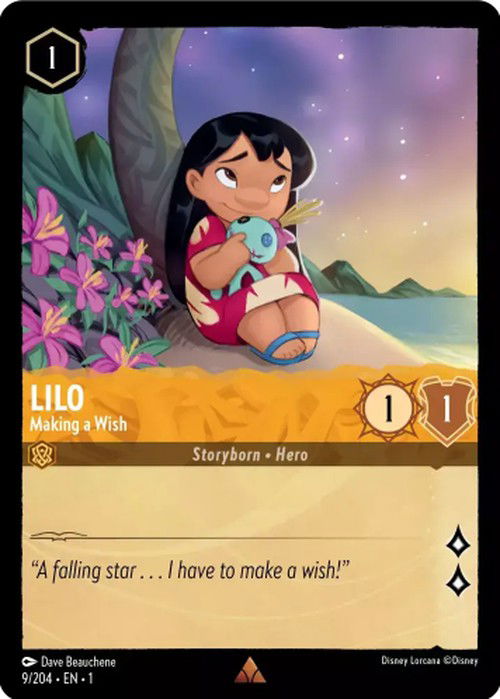
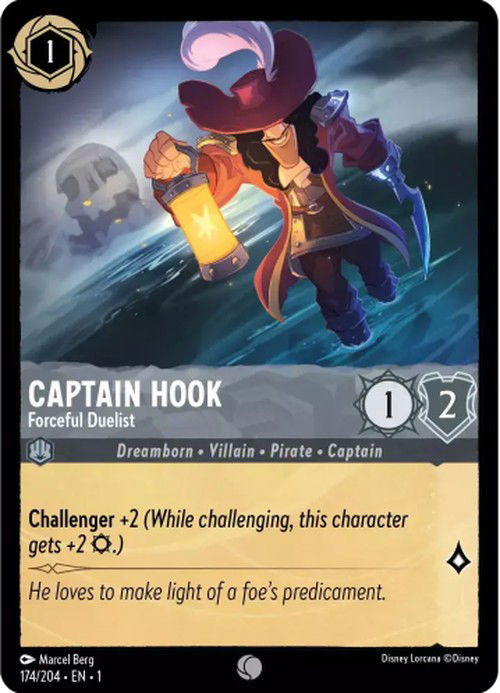
Using Captain Hook- Forceful Duelist and comparing it to Lilo- Making a Wish, you can see the numbers on the top left. The spiral around the hexagon on Captain Hook means that it can be placed into your Inkwell and used for Ink, whereas Lilo cannot.
To play a card for Ink, you play it face up to the opponent, to show that it can be placed in the Inkwell, and then turn it face down. It comes into play in the Inkwell ready to use, unless otherwise stated. In this example, you can put Captain Hook in the Inkwell and use it for the turn to play Lilo, thus Exerting that Ink for the turn.
The Inkwell readies at the start of every turn, so you can use it again for next turn, and can only put one card into the Inkwell every turn, unless a card effect states otherwise.
Cards Cost
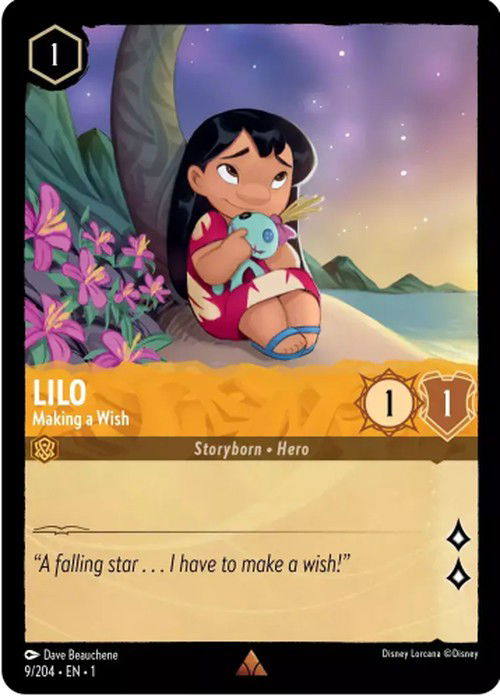
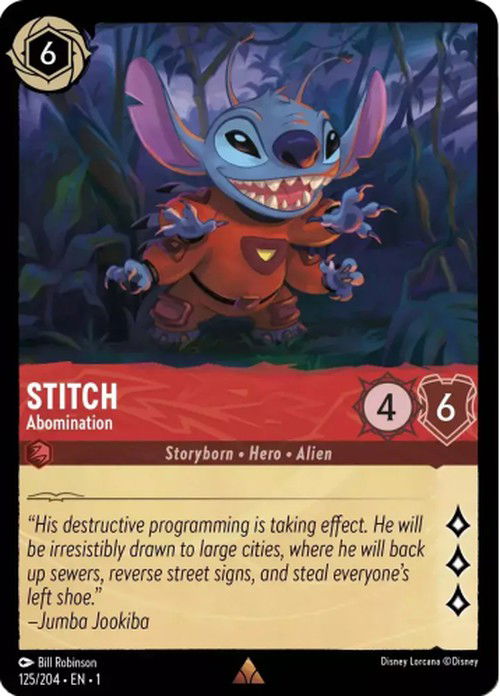
This brings us nicely into the card costs.
Using Lilo and Stitch as an example, above the top left box, Lilo costs one Ink, but Stitch costs 6. This means that you can play Lilo on turn one and Stitch on turn 6, assuming you are putting one card into the Inkwell each turn. That is as complicated as it gets.
Card Types
There are three card types in Lorcana; Characters, Actions and Items.
Characters are as expected: you play them and interact with Lore and other opposing characters.
Actions are cards that have an effect; once that has been carried out, it is put into the discard pile. Think of them like a character casting a one-time effect that disappears once it's done.
Items are cards that you play, and they stay on the field once played. They usually have abilities that exert them to use it or activate when something specific happens.
Characters
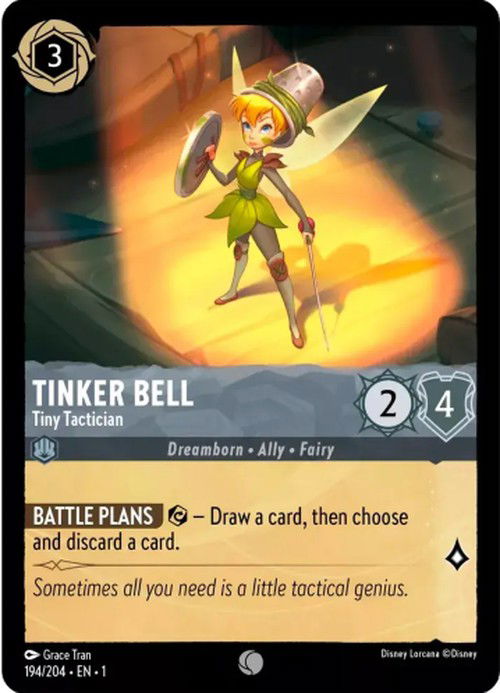
You have played cards in your Ink and you managed to play a character, now what?
Well, unless the card has an ability that states otherwise, it is not ready, so it can’t do anything. But once it has been in play for a full turn and readied at the start of your turn, it is good to go.
So what you can do is exert it or tap it 90 degrees to either;
- Quest, which will increase your Lore Value;
- Challenge an opposing exerted character ;
- Or use its exert ability (if it has one) like Tinkerbell - Tiny Tactician.
Strength, Willpower & Damage
If you decide to challenge an opposing character, what happens?
We're using Tinkerbell - Tiny Tactician and Stitch - Abomination as an example.
Tinkerbell has 2 Strength and 4 Willpower, and Stitch has 4 Strength and 6 Willpower.
If Stitch challenged Tinkerbell, Tinkerbell would take 4 damage and Stitch 2, as you deal their respective Strengths against the others' Willpower. If the damage to the character is greater or equal to the Willpower, the character is placed into the discard pile.
In the example above, Stitch would be a 4/6 with 2 damage on it from Tinkerbell. This would stay on Stitch unless an ability removes the damage or moves the character to a different zone, i.e. return to hand etc.
Exerting, Singing & other Notable Abilities
Exerting is a very common thing to do with your characters in Lorcana, but this requires tapping them 90 degrees and exposing them to being challenged. So choose what you would like to do with your characters wisely!
There are some notable abilities you will need to know. This is a list I believe you will come across frequently as it is important to remember them whilst playing.
Rush
Rush is simple: it allows the character that has just been played to challenge a character as soon as it comes in. Notably, it doesn't allow it to quest the turn it comes in.
Evasive
Evasive is a keyword that can be very annoying to fight if you aren't prepared for it. The character with Evasive can only be challenged by other characters with Evasive.
Shift (Number)
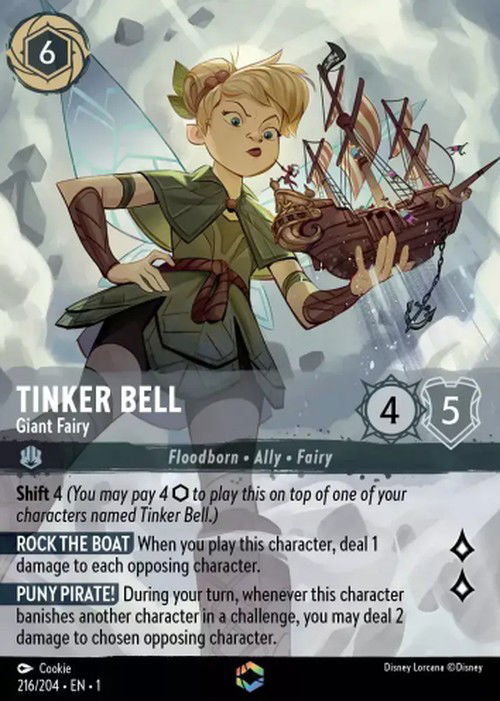
Shift is probably one of the strongest abilities in Lorcana, and is the keyword that decks are built around initially. Shift allows you to pay a more expensive character for cheaper if you put it on top of a card with the same name. For example, you can Shift 4 Tinkerbell - Giant Fairy onto another card for 4 Ink. The card costs 6 to play out normally. This ability is very good at getting out big threats earlier than normal.
Reckless
Reckless is a keyword that is usually on strong cards as a downside, as cards with Reckless must challenge characters if able. This can be a downside, but it allows you to get strong-statted characters out sooner to compensate for the generally negative keyword.
Ward
Ward is a great mechanic against decks with a lot of removal action spells, as characters with Ward can't be chosen except to be challenged. Meaning, certain characters can be hard for some decks to remove.
Support
Support allows you to add another character's Strength onto another if they quest. This is a surprisingly strong ability when you go wide with countless characters, as you get to keep questing without losing the Strength on the board to control the board.
Bodyguard
Bodyguard is a useful keyword to protect specific characters from being challenged. A card with Bodyguard allows the character to be exerted, and it must be challenged first if possible. It is a great way to protect weaker characters that have a high quest value.
Challenger (Number)
Challenger is a mechanic that allows your character to get more Strength when challenging an opposing character. The amount of Strength it gains is depicted next to the mechanic on the card. This allows what is normally a weaker character to beat or trade with a stronger character when your character is being the aggressor.
Singing & Singer
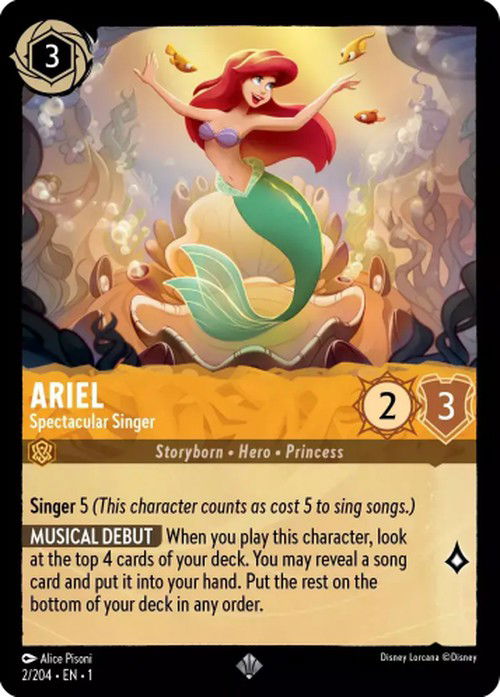
Singing a song and singer mechanic/keywords are fascinating. A Song is an action card that, once the effect has been completed, goes to the discard pile. However, a song differs because you can exert a character with a cost equal to the song value and play it for free. Note that you can't sing a song with a character that can't be exerted as it isn't ready (just come into play). A character with singer can sing a song higher than its cost. For example, Ariel is a three - cost character that can sing for a value of five.
Ink Types in Lorcana
The colors or Ink types in Lorcana aren't as restrictive as they are in Magic because you can still find other keywords in other Ink types. However, there are general themes for each Ink type, so let's take a look;
Amber
Amber is the Ink type of supportive characters, generally. You can expect many cards with Bodyguard and cards that restore health. So if you want high Willpower characters that heal and have Bodyguard, this is the perfect Ink type.
Emerald
Emerald is described as the quick footed characters who are never caught off guard. This means thieves or characters that interact whilst being challenged or have abilities to refresh or untap.
Sapphire
Sapphire is the Ink type for academics and strategists. Characters will often have strong abilities on them that can be used strategically. Inventors and artist characters will most likely be in these Ink type.
Amethyst
Amethyst is the Ink type of characters who use magic. Often, these characters will have powerful effects that are weaker and often underwhelming if these abilities are used to full effect. Elsa fans will appreciate this Ink type.
Ruby
Ruby is the Ink type of bravery. This is often depicted by giving them abilities such as Rush and Reckless, so they can challenge another character as soon as they are played, and thwart the danger presented.
Steel
Steel is the Ink type of power and defense, often having high Willpower and Strength. This can frequently be shown by the challenger keyword that makes them get more Strength when challenging opposing characters. These characters are usually just strong characters for their cost.
How to Start
If you are interested in playing this game, my initial advice is to always check your local game store and support them whenever possible.
I am aware that, as of writing this article, stock can be an issue. Ravenburger has announced another print run of the First Chapter to meet popular demand. But always talk to your local game store to see when they are getting Lorcana in.
Conclusion
I am not the biggest Disney fan, but I am a massive fan of card games and these mechanics are great. It has a unique mana system and still produces a great unique approach to the TCG genre, battling it out. It also does all of this whilst keeping the Disney feel to it. It is really a great game overall, and I am really excited about the future of Lorcana.
Until next time!

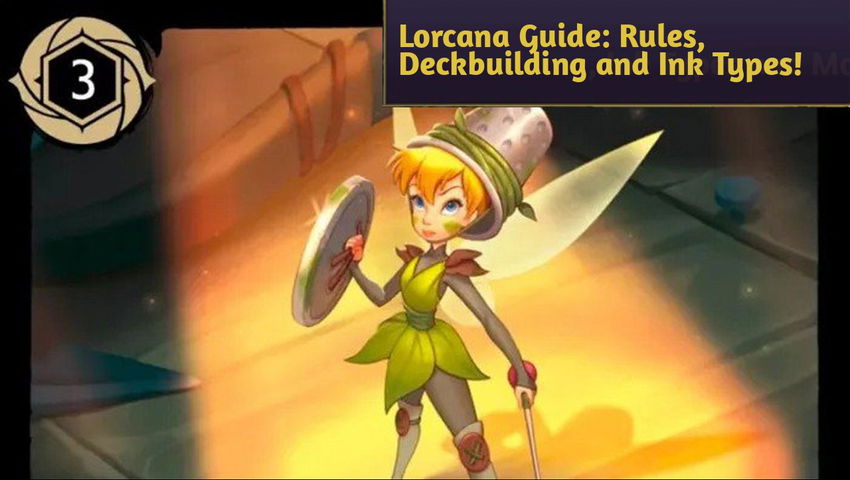






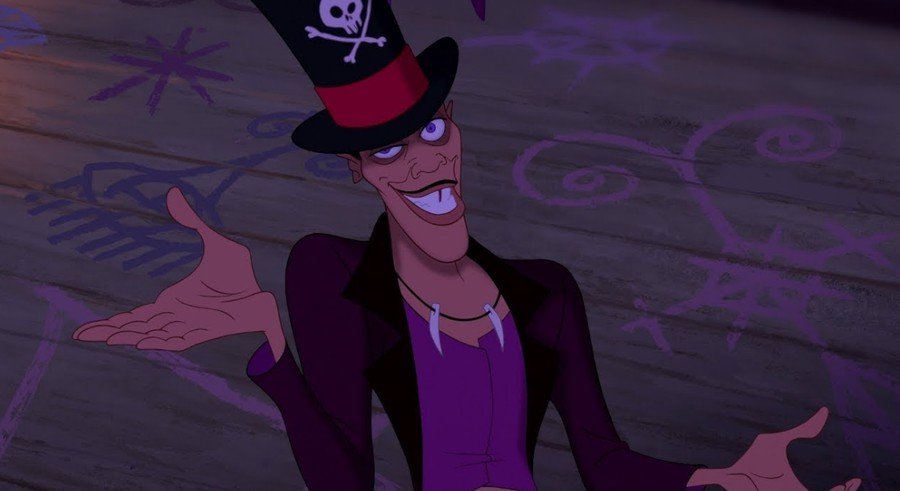
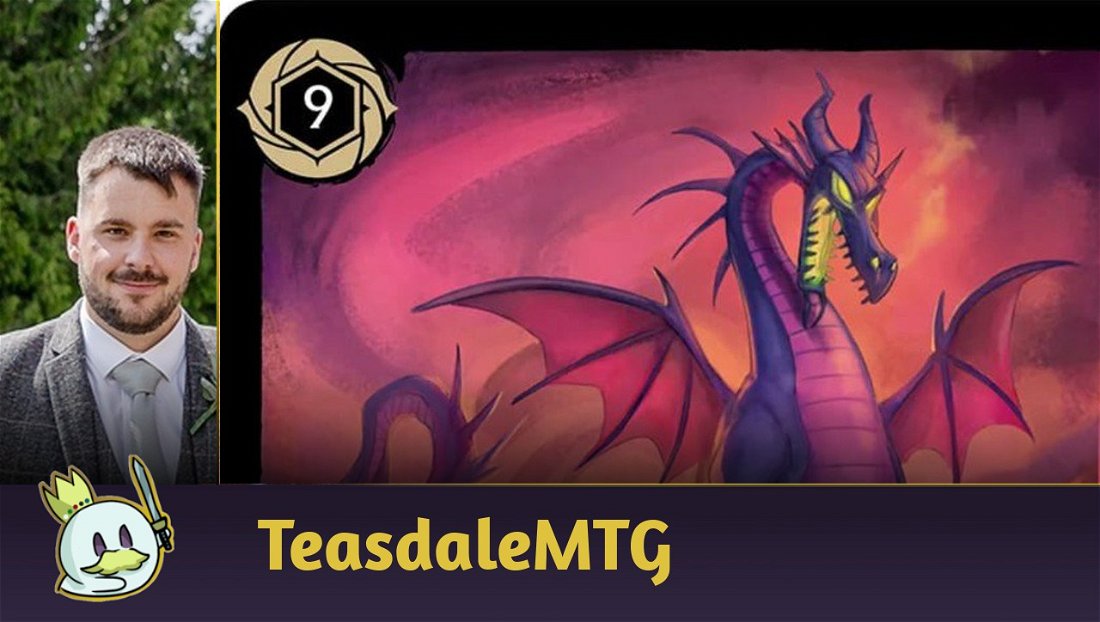
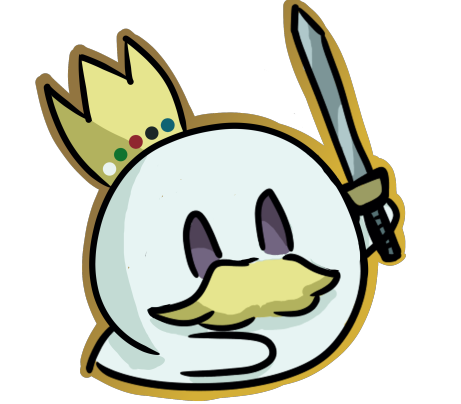


— Comentários 0
, Reações 1
Seja o primeiro a comentar